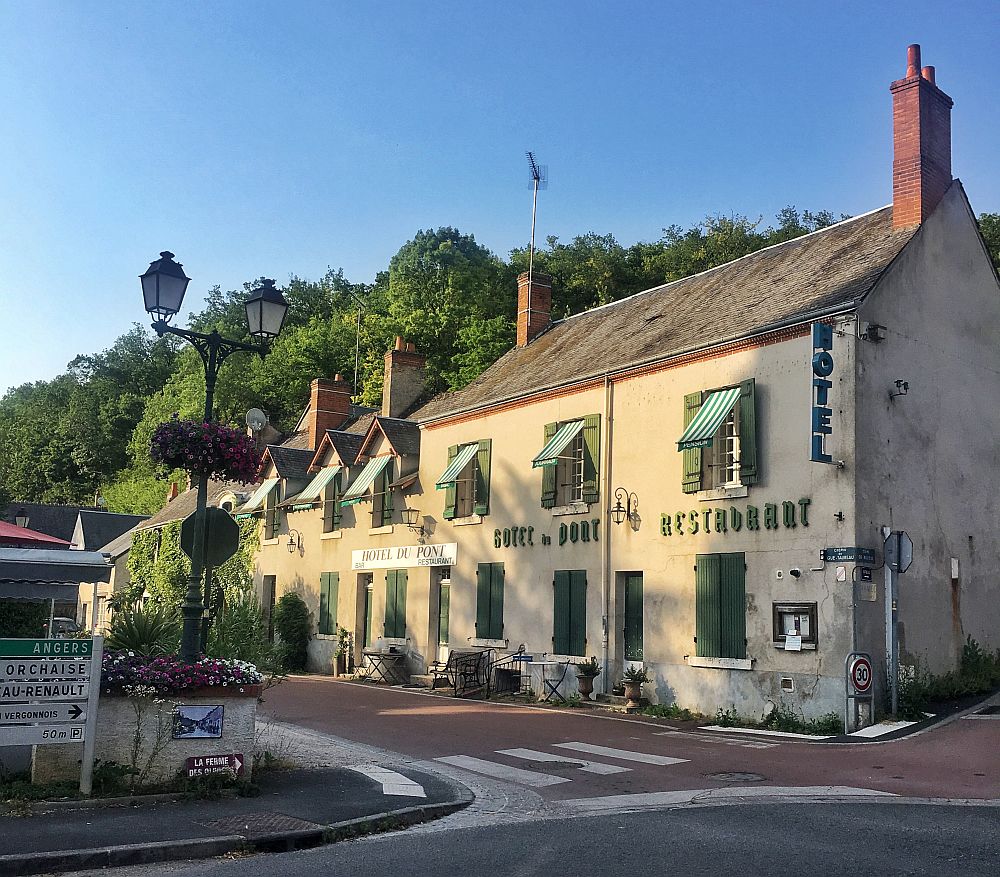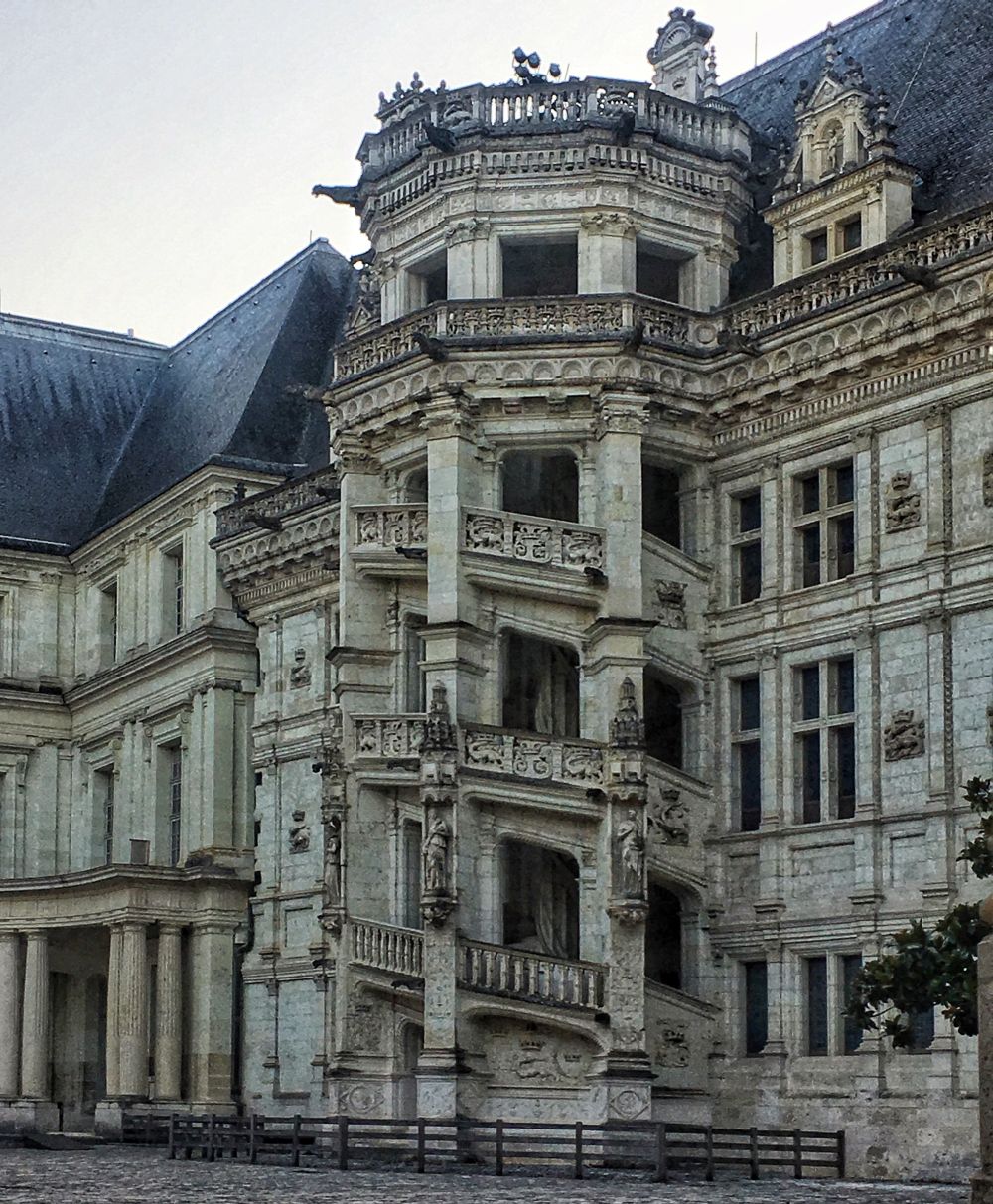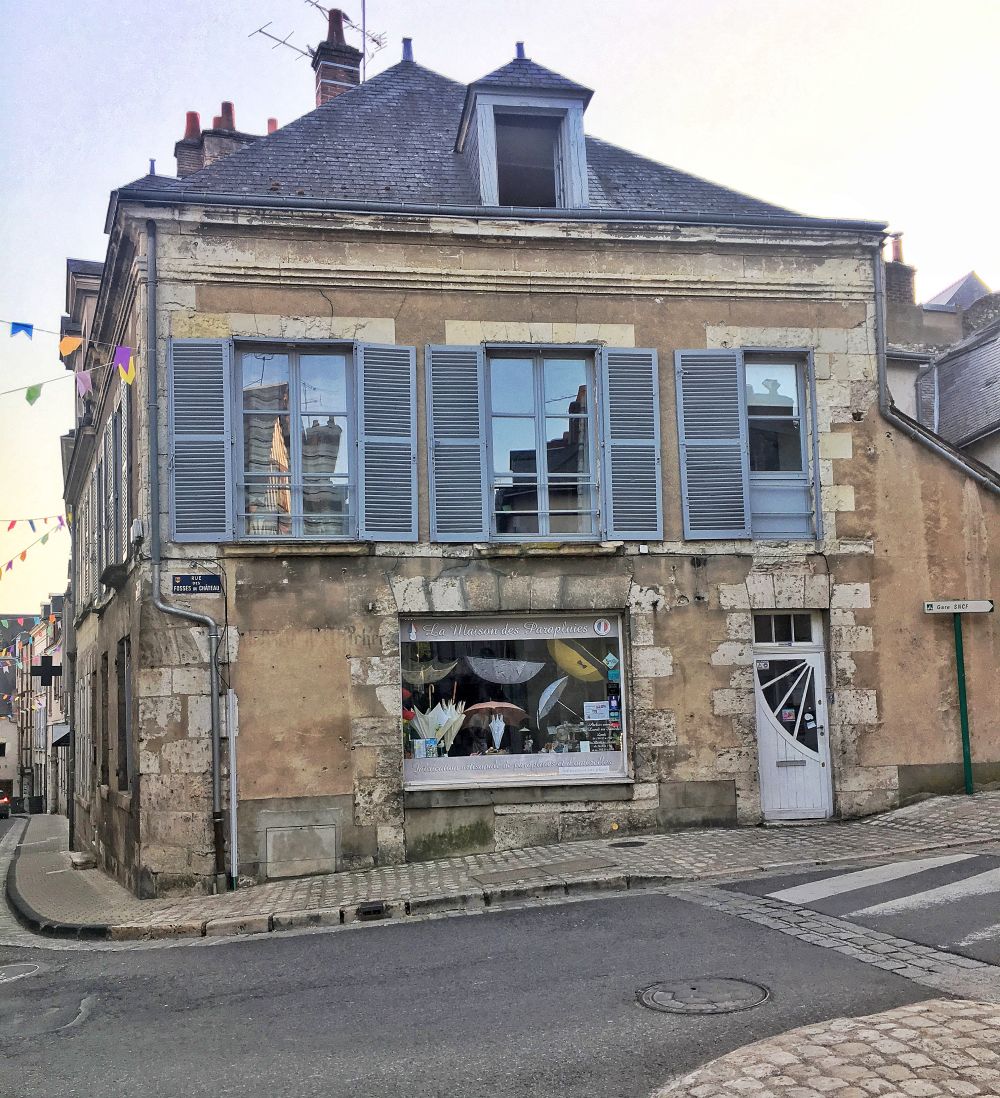Cand am pornit de la Paris in excursia noastra prin castelele de pe Valea Loirei, am lasat deoparte autostrazile si am ales drumurile nationale, descoperind astfel, pentru prima data, Franta centrala. Recunosc ca m-a impresionat. Paduri intinse si stufoase, pasuni, terenuri agricole, lanuri de grau, porumb, floarea-soarelui, toate ilustrand nu doar o natura darnica, cat munca sustinuta de intretinere, cultivare, arat, irigatii si multe alte lucrari in spatele carora se afla niste oameni gospodari si harnici. Iar localitatile, indiferent ca era un satuc cu 15 case, o comuna sau orasel, de o curatenie impecabila, totul ingrijit, varuit, vopsit, cu ronduri de flori sau trandafiri ce imbraca gardurile. Da, omul sfinteste locul, chiar daca s-a nascut si locuieste in tara unde sunt 300 de castele doar pe Valea Loirei.
Despre castele v-am povestit in articolul anterior, il gasiti aici.
In periplul nostru pe Valea Loirei, ne-am oprit, plimbat si am locuit pentru cateva nopti in Blois, Molineuf, Amboise si Chinon.

Molineuf este o comuna cu vreo suta de case (majoritatea case de vacanta sau pentru turisti), foarte linistita si pitoreasca, cu multa vegetatie, un rau ce trece prin centru si un hotel mic, deschis doar in plin sezon. Noi am inchiriat un apartament din dependintele unei mori medievale din secolul XII, perfect reconditionat, cu vedere la rau si padure, unde in fiecare dimineata, pe balcon, la micul dejun, ne uimeam vazand pestii uriasi din apa, probabil o specie de crap. Peisajul este absolut idilic, cred ca e locul ideal pentru a scrie o carte, deoarece imbie la activitati boem-creative sau, de ce nu, pentru odihna deplina.
In apropiere de Molineuf se afla castelul Chambord.






Blois este situat pe-un deal si e asezat de-o parte si de alta a Loirei, care trece linistita si splendida mai ales la apus, cand oglindeste orasul in apele sale.
Șapte regi și zece regine ale Franței au trăit la Château de Blois, iar arhitectura elaborata vorbeste de la sine despre opulența curții franceze în Renaștere. La intrarea in acest palat din secolul XVI se afla statuia ecvestra a lui François I, cu deschidere catre curtea interioara dominata de o scara exterioara în spirală. Maiestuoasă si amintind de scara in dublu helix de la Château Chambord, construita din dorinta regelui dupa schita lui Leonardo da Vinci; se pare ca lui François I ii cam placeau scarile statement in spirala 😉






Vis-à-vis de castel se afla La Maison de la Magie Robert-Houdin, un muzeu al magiei albe si negre.
Alt reper din oras este Catedrala Sfantul Ludovic cu arhitectura romano-gotică, monument istoric si, incepand din 1697, sediul Episcopiei de Blois.
In apropiere de Blois este Amboise, unde se afla Château du Clos Lucé, castelul in care a locuit Leonardo da Vinci.




Dupa ce-am vizitat splendidul Château de Chenonceau, am ajuns la Chinon, unde am stat cateva zile, strabatandu-l pe indelete si gustand din preparatele locale. Caci da, este un loc al gurmanzilor, consacrat de Rabelais, marele scriitor francez, medic, călugăr și umanist care a scris „Gargantua și Pantagruel”, si care s-a născut la Chinon în 1494.
Chinon este un orasel situat in regiunea Touraine, cunoscută drept „grădina Franței”. Este foarte pitoresc, cu străzile înguste si pietruite din centrul vechi, pline de clădiri frumoase, mai ales Rue Voltaire și Rue Jean-Jacques Rousseau, unde sunt conace mici și biserici din Evul Mediu, foarte bine conservate. Casele sunt un amestec fermecător din piatră și jumătate din lemn, cu o mulțime de caracteristici decorative ce unesc cele doua stiluri arhitecturale.







Veti vedea numeroase “cave”, celebrele „peșteri” făcute faimoase de Rabelais, adică niste beciuri uriase ce adapostesc butoaie cu vinuri din zona, beciuri in care se intra cu masina. Producția de vin este importantă pe plan local, iar podgoriile se întind pe malul râului Vienne, din rodul carora rezulta si celebrul Cabernet, ce merge tare bine cu carne de iepure, mistreț și brânzeturi.




Casuta romantica si foarte confortabila in care-am locuit pe durata sederii in Chinon – Charmant Gîte aux Quinquenais – e construita partial intr-o asemenea pestera, doi pereti ai parterului fiind lipiti de grota, ceea ce aducea o racoare extrem de placuta in interior. Françoise, proprietara, s-a dovedit a fi un super-host, extrem de amabila. Mai ales ca, in plus fata de privelistea magnifica asupra orasului si a fortaretei (Forteresse Royale de Chinon), ne-a rasfatat cu dulceata facuta de ea si o delicioasa tarte aux abricots 😉

Charmant Gîte aux Quinquenais à Chinon – Logement entier hosted by Françoise Darniche




Printre savorile locale, mi-a placut rata la cuptor, seducator de bine asezonata cu legume, de la restaurantul “Au Café Chaud” din centru (Place de la Fontaine), dar mai ales cina de la L’Entrepotes, care va ramane multa vreme memorabila pentru papilele mele gustative.


Foie gras marbré aux figues et chutney à la mangue

Emincé de cochon noir iberique, sauce chorizo, cromesqui de pommes de terre et parmesan

Désert du jour aux poires
Revenind la lucrurile de baza si fericirile simple, cu siguranta una dintre ele a fost painea proaspata luata dimineata, calda, de la boulangerie, decorata apoi generos cu mousse de canard, care insotea perfect cafeaua de dimineata. M-as obisnui imediat cu les matins françaises.

English version text:
When we started from Paris on our excursion through the castles on the Loire Valley, we set aside the highways and chose the national paths, thus discovering, for the first time, central France. I admit it impressed me. Large forests, pastures, agricultural lands, wheat chains, corn, sunflower, all illustrating not only a happy nature, but the sustained work of maintenance, cultivation, plowing, irrigation and many other works behind which some people are, hardworking. And the localities, whether it was a village with 15 houses, a commune or town, all with impeccable cleanliness, everything neat, variegated, painted, with rounds of flowers or roses lining the fences. Yes, the man sanctifies the place, even though he was born and lives in the country where there are 300 castles only on the Loire Valley
About the castles I told you about in the previous article, you can find it here.
In our journey on the Loire Valley, we stopped, walked and lived for a few nights in Blois, Molineuf, Amboise and Chinon.
Molineuf is a commune with about one hundred houses (mostly holiday or tourist houses), very quiet and picturesque, with lots of vegetation, a river that runs through the center and a small hotel, open only in full season. We rented an apartment from the outbuildings of a medieval mill from the 12th century, perfectly reconditioned, overlooking the river and forest, where every morning, on the balcony, at breakfast, we were surprised to see the huge fish in the water, probably a species of carp. The scenery is absolutely idyllic, I think it is the ideal place to write a book, because you are immersed in bohemian-creative activities or, why not, for full rest.
Near Molineuf is the castle of Chambord.



Blois is located on a hill, spreading on both sides of the Loire, which passes quiet and splendid especially at sunset, when it mirrors the city in its waters.
Seven kings and ten queens of France lived at Château de Blois, and the elaborate architecture speaks for itself of the opulence of the French court in the Renaissance. At the entrance to this palace from the 16th century is the equestrian statue of François I, with an opening to the inner courtyard dominated by an outer spiral staircase. Majestic and reminiscent of the double helix staircase from the Château Chambord, built according to the king’s wish using the sketch of Leonardo da Vinci; it seems that François I liked the spiral statement stairs;)
Opposite the castle is the Robert-Houdin House of Magic, a museum of white and black magic.
Another landmark in the city is the Cathedral of Saint Louis with Roman-Gothic architecture, historical monument and, from 1697, the headquarters of the Episcopate of Blois.
Near Blois is Amboise, where is Château du Clos Lucé, the castle where lived Leonardo da Vinci.


After visiting the splendid Château de Chenonceau, we arrived in Chinon, where we stayed for a few days, pleasantly walking through and enjoying the local dishes. Because yes, it is a place of the gourmets, consecrated by Rabelais, the great French writer, doctor, monk and humanist who wrote “Gargantua and Pantagruel”, and who was born in Chinon in 1494.
Chinon is a town located in the Touraine region, known as the “garden of France”. It is very picturesque, with the narrow, cobbled streets of the old center, full of beautiful buildings, especially Rue Voltaire and Rue Jean-Jacques Rousseau, where there are small mansions and churches of the Middle Ages, very well preserved. The houses are a charming mixture of stone and half of wood, with a lot of decorative features that combine the two architectural styles.




You will see many “caves”, made famous by Rabelais, that are some huge cellars that house wine barrels in the area, where you enter by car. Wine production is important locally, and the vineyards extend along the bank of the Vienne River, from which the famous Cabernet also results, which goes well with rabbit, wild boar and cheese.
The romantic and very comfortable cottage where we lived during the stay in Chinon – Charmant Gîte aux Quinquenais – is partially built in such a cave, two walls of the ground floor being attached to the cave, which brought an extremely pleasant cool air inside. Françoise, the owner, proved to be a super-host, extremely kind, friendly and polite. In addition to the magnificent view over the city and the fortress (Forteresse Royale de Chinon), she has spoiled us with the fruit jam made by herself and a delicious tarte aux abricots.

Charmant Gîte aux Quinquenais à Chinon – Logement entier hosted by Françoise Darniche. Photo via @airbnb.
Among the local flavors, I liked the oven prepared duck, seductively well seasoned with vegetables, from the restaurant “Au Café Chaud” (Place de la Fontaine), but especially dinner at L’Entrepotes, which will remain a long time memorable for my taste buds.

Photo via Facebook Page restaurant “Au Café Chaud”

Photo via Facebook Page restaurant L’Entrepotes
Returning to the basic things and simple happiness, surely one of them was the fresh bread taken in the morning, warm, from the bakery, then decorated generously with duck mousse, which perfectly accompanied my morning coffee. I would get used to the French mornings immediately.
Photo credits: personal archive Ruxandra Chiurtu